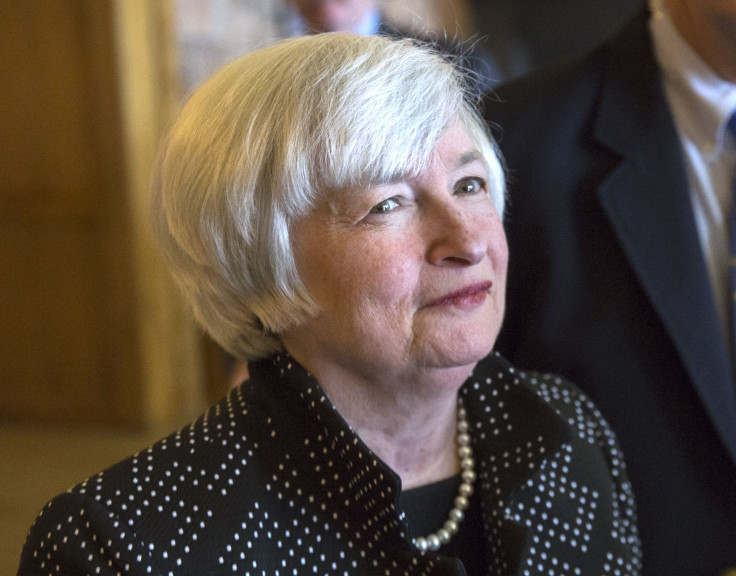Fed Beige Book: Most Wage Growth In US Economy Going To Skilled Workers

The U.S. economy over the last two months painted a grim picture for the average worker, showing only modest wage growth, but the data showed improving pay for skilled workers in areas like health care and information technology. Economists are keeping a particularly close eye on wage growth as it has not kept up with gains in other metrics measuring the overall economy.
Wage gains are important as they provide the extra cash to workers to fuel the roughly 70 percent of the nation's economy driven by consumer spending.
Overall, the economy continued growing modestly this summer as employment, wages and prices slightly increased, in part on the strength of stronger car sales and tourism, the Fed said Wednesday.
The central bank’s district-by-district survey, called the beige book, reported that economic activity in June and July “expanded since the previous Beige Book report; however, none of the Districts pointed to a distinct shift in the overall pace of growth.”
“This is largely a steady-as-she-goes beige book with most districts reporting consistent trajectories of key economic variables,” said Jared Bernstein, chief economist and economic policy adviser at the Center for Budget and Policy Priorities.
The beige book, issued eight times a year, is meant to offer economists and Fed watchers a peek inside the regional factors that have affected the national economy in the last two months.
The 12 districts reported few changes in wages, though Richmond said wage growth has slowed in the region due to the manufacturing and service sectors there. Atlanta, Chicago, Dallas and San Francisco reported greater pressures on employers to raise wages for jobs in energy, construction, trucking, manufacturing, engineering, information technology, finance and health care, among others, with the strongest wage pressures in specific categories of skilled workers.
“We know that Chair [Janet] Yellen is looking closely at the wage results, and here, it’s notable that labor market conditions were again described as modest or relatively unchanged,” Bernstein said.
"The one thing that’s interesting is that there’s more wage pressure for skilled workers," said Scott Clemons, chief investment strategist for the private bank Brown Brothers Harriman. "It’s a normal development following an economic recession. What’s abnormal about it is that it’s taken this long for it to pick up."
Wages have been rising since the recovery started five years ago, but wage pressures, the acceleration of wage increases, have lagged. The latest beige book indicates wage pressures are beginning to spread across the country, though still mostly for skilled workers.
The previous beige book, released July 16, noted modest economic growth and modest wage increases, aside from skilled positions, in April and May. Some employers in the energy and technology sectors, in Dallas and San Francisco, respectively, hiked wages significantly for skilled positions as they struggled to find qualified workers. The Fed has characterized growth as “moderate” or “modest” for more than a year.
About half the districts reported stable or growing residential real estate activity, suggesting that growth in the housing sector remains weak. Many districts also reported that credit conditions are slowly loosening.
Economists generally view the beige book as a supplemental report without much substance that would hint at coming changes in economic or monetary policy. While some studies have concluded the report offers a bit of unique information, other studies disagree.
“Anecdotes can be useful sources of information, but my guess is that much of this anecdotal evidence would not be reported in the beige book unless regional Fed officials had other hard statistical evidence that supports the same conclusions about the local economy,” said Gary Burtless, labor economist and senior fellow at the Brookings Institution.
“The anecdotal evidence … does matter,” Paul Donovan, global research analyst for the Swiss financial services company UBS, wrote in a note ahead of the report’s release. “However, the overall tone of the beige book has been ‘behind the curve’ of economic reality in recent publications. The Fed may be underestimating or downplaying the recovery.”
A former Fed vice chairman, Alan Binder, famously compared the report in the '90s to asking one’s uncle about the state of the economy.
The Federal Reserve’s policy-making committee next meets on Sept. 16 and 17.
© Copyright IBTimes 2025. All rights reserved.






















